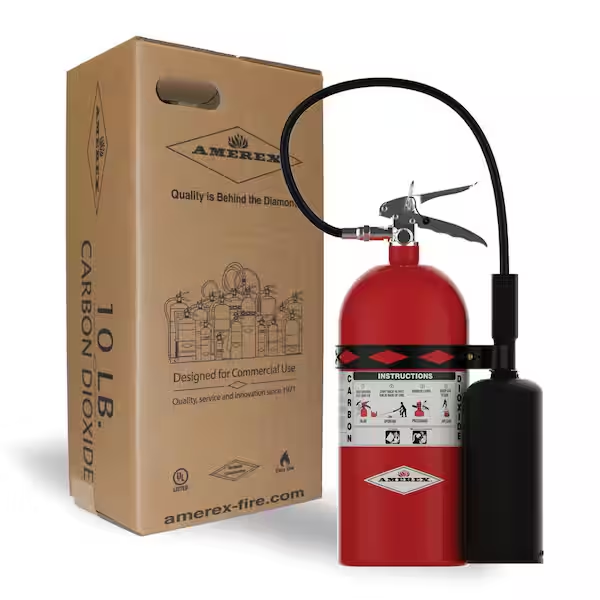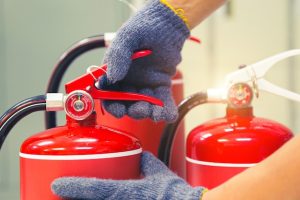In the realm of fire safety, ensuring the optimal performance of equipment isn’t just a best practice—it’s a matter of life and death. One of the most critical tools in the firefighting arsenal is the CO2 fire extinguisher. Like all equipment, it requires regular maintenance, and among the most crucial maintenance procedures for CO2 extinguishers is hydrostatic testing. This blog post aims to shed light on the importance of hydrostatic testing for extinguisher CO2 cylinders, ensuring their safe and effective operation.
What is Hydrostatic Testing?
Hydrostatic testing is a method used to check the integrity and strength of pressurized vessels, such as CO2 extinguisher cylinders. The procedure involves filling the cylinder with a nearly incompressible liquid—typically water—and pressurizing it to a specific test pressure, which is generally higher than its normal operational pressure. The cylinder is then examined for leaks, distortions, or any other signs of potential failure.
Why is Hydrostatic Testing Necessary for CO2 Extinguisher Cylinders?
- Safety Assurance: As the CO2 extinguisher is a pressurized device, any weakness in the cylinder can lead to catastrophic results. Even a small flaw could cause the cylinder to rupture when pressurized, posing significant risks to users and the surrounding area.
- Performance Guarantee: For a fire extinguisher to be effective, it must discharge its contents reliably and efficiently. Compromised cylinders might not only fail to discharge but could also explode upon activation.
- Regulatory Compliance: In many jurisdictions, regular hydrostatic testing is not just recommended but legally required. Failure to comply can lead to penalties, liabilities, and invalidated insurance claims.
- Extending Equipment Lifespan: Identifying minor issues early can help in repairing or replacing affected cylinders, thus prolonging the life of the entire extinguisher unit.
The Hydrostatic Testing Procedure
- Emptying the Cylinder: Before testing, the cylinder must be emptied of its CO2 content. This ensures that only the structural integrity of the vessel is being tested, without interference from its contents.
- Visual Inspection: Before and after the hydrostatic test, a thorough visual examination is essential. This can reveal visible signs of wear, corrosion, or damage.
- Filling with Water: The cylinder is then filled with water, ensuring no air pockets remain. This is because water, unlike air, is nearly incompressible, reducing the risk of explosions.
- Pressurizing: The water-filled cylinder is pressurized to a predetermined level, which is higher than its operational pressure. This ‘stresses’ the cylinder, revealing any weaknesses.
- Observation: As pressure is applied, the technician observes the cylinder for any expansion. A certain amount of expansion is acceptable, but if the cylinder doesn’t return to its original size after depressurization, it may have lost its elasticity and should be replaced.
- Drying and Refilling: Once the test is complete and the cylinder passes, it’s essential to dry it thoroughly to prevent internal corrosion. The cylinder can then be refilled with CO2 and put back into service.
Frequency of Testing
The frequency of hydrostatic testing varies based on regulatory standards and the material of the cylinder. Generally, CO2 extinguisher cylinders require testing every 5 to 10 years, but it’s essential to consult local regulations and manufacturer guidelines.
What Happens If a Cylinder Fails the Test?
A cylinder that fails hydrostatic testing should never be refilled or reused. It must be safely decommissioned and recycled or disposed of according to local regulations.
In Conclusion
Hydrostatic testing is an indispensable component of maintaining CO2 fire extinguishers. It ensures that extinguishers operate efficiently and safely, preventing potential tragedies. As with many safety protocols, the importance of this test cannot be stressed enough. Whether you’re a business owner, facility manager, or just someone with a CO2 extinguisher at home, ensure that your equipment undergoes regular hydrostatic testing. In the realm of fire safety, it’s always better to be proactive than reactive.
FAQs: Hydrostatic Testing For Co2 Extinguishers
Q: How often do CO2 tanks need to be hydro tested?
CO₂ cylinders typically require hydrostatic testing every five years to confirm their structural integrity and safe operating condition. This periodic test ensures the cylinder can withstand pressure, preventing failures during use and maintaining compliance with established safety standards.
Q: What is the hydrostatic test pressure for a CO2 fire extinguisher?
CO₂ fire extinguishers are generally hydrostatically tested at approximately 3,000 psi, depending on cylinder specifications. This pressure verifies the extinguisher’s ability to hold high pressure safely and ensures continued reliability during emergency use under NFPA and DOT guidelines.
Q: How to check CO2 fire extinguisher?
Inspect a CO₂ extinguisher by confirming the safety seal, checking the weight against the nameplate, ensuring the nozzle is clear, examining the body for corrosion, and verifying the hydrostatic test date. Any irregularities indicate maintenance or professional servicing is required.
Q: What are the requirements for hydrostatic testing NFPA 24?
NFPA 24 requires underground piping and related components to undergo hydrostatic testing at specified pressure levels to verify strength and prevent leakage. Systems must hold test pressure without loss, ensuring reliability of private fire service mains before activation.
Q: Can we hydrostatic test scuba tanks?
Yes, scuba cylinders require periodic SCUBA tank hydrostatic testing to confirm they can safely endure internal pressure. This process checks the tank’s structural integrity, detects stress or metal fatigue, and ensures it remains suitable for continued use under recognized safety standards.







